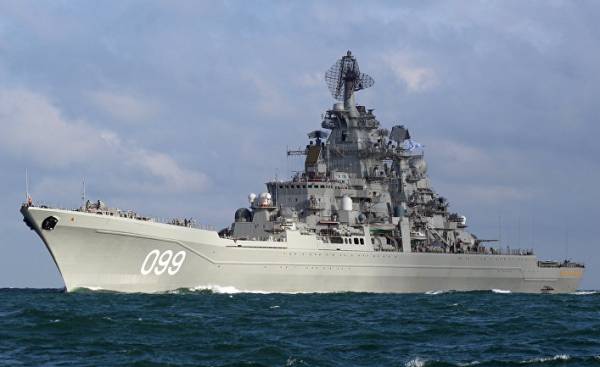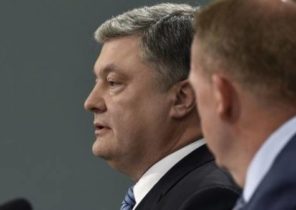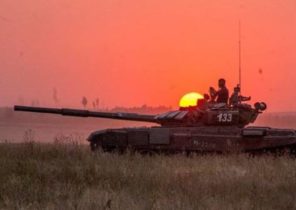
After the collapse of the Soviet Union in 90-e years when it was difficult to maintain a court and did not have enough money, the Russian Navy tried to adapt their naval forces during the cold war to the new conditions. After 2000, when the Russian economy began to grow, the first idea of how to return the powerful Russian Navy to the world stage. In 2011 I developed a large-scale rearmament program. According to her, the Ministry of defence of the Russian Federation must get a hundred new warships by 2020, including 20 submarines, 35 corvettes and 15 frigates. Of course, a new stage in the development of the Russian fleet became the annexation of the Crimea, through which Moscow has started to strengthen its forces in the Black sea. It is planned to submit 18 new ships and submarines.
At the end of the cold war in 1991, the Soviet fleet had almost a thousand military vessels, from small patrol boats to large aircraft carriers. In that period of history, the Soviet Navy played a vital strategic role in light of the potential war with the West. The Navy was an important tool of deterrence, because the Soviet submarines were nuclear and could use missiles with nuclear warheads. The fleet was also responsible for the first line of defense of the Soviet territory and, where possible, violated the NATO communication.
After the collapse of the Soviet Union and end of cold war, the Soviet fleet was disbanded, and a modern Russian Navy. Began the most difficult time for this once famous fleet, as the maintenance of the Navy lacked Finance. The fighting capacity of the fleet fell, and the update program stopped. It was not until 2002, when manifested itself and the problem of the lack of educated personnel. Finally, in 2009, former Northern fleet commander Admiral Vyacheslav Popov said that by 2015 the combat capability of the Russian Navy will be extremely low if not to revise the current shipbuilding plans and to build new ships.
The unfavourable situation persisted even after the coming to power of Vladimir Putin. He supported the financing of large programmes for the modernization of military aviation and Navy, but much remained only in words. The accident, which occurred with the submarine “Kursk” in 2000 was a turning point. Part of this tragedy was a symbol of the collapse of the fleet and a loud cry for help. The lack of discipline, outdated technology, carelessness and poor command were called reasons that led to the death of the submarine and her crew. Then began a large-scale modernization, which is expected to end around 2030. However, on the way of modernization, there are many obstacles.
Speech, in particular, that the Russian Navy has much fewer ships than the Navy of the USSR, more precisely — they are less than 25%. The specifics of the Russian naval forces in that they are geographically separated. Therefore, Russia today is the Northern, Pacific, black sea, Baltic and Caspian fleet. However, Russia sees the mission of his fleet, the same which was in the Soviet Union. The Navy needs to play a significant role in the deterrence (constant patrolling and monitoring Maritime border), and submarines to support the nuclear backbone of the country.
In addition to this mission, which involves going into international waters, the Russian Navy seeks to protect Russian banks from any external threat. It needs to ensure that from sea to Russia will not attack anyone. However, these tasks are difficult, because today in Russia there are simply not enough ships and submarines. Those ships that Russia has outdated. The shipyard is in dire need of modernization which is impossible without imported components, especially in the West. The sanctions that were imposed against Russia during the Ukrainian crisis, are putting additional pressure on the Russian fleet and shipbuilding.
The Kremlin sees Russian Navy force that will declare the Russian power on a global level. However, such a vision is nothing more than a dream. The Navy could boast only nuclear submarines, but he had no weapons that would have turned it into a powerful Maritime force. Of course, the Russian leadership understands this, and to remedy the situation have been proposed several strategies, in particular, there were calls to build three to five aircraft carriers. However, due to financial difficulties did not receive order no one.
So Russia has moved to the tactics of “step by step” first and foremost, going to start preparing the fleet, which will be able to monitor Russian territorial and neutral waters close. While Russia is particularly interested in the presence in the Atlantic ocean and in the Arctic region. Atlantica is a region of potential intersection of interests of the forces of a multipolar world. It’s not only about NATO and the West, but about China. The Arctic is a vital strategic region, which promises great economic benefits (thanks to the new means of communication between the Pacific and Atlantic ocean) and mineral wealth.
In the medium term, the Russian Navy could be saved only by modernization of existing shipyards and building new ones. The apparent collapse of military shipbuilding in Russia is already a reality. Numerous ships of the type “Kirov”, the pride of the nuclear fleet of the Soviet Union — proof. Of the four such ships, two were written off because they were so worn that repairing them would make sense. One ship — “Peter the Great” — is armed and the second — “Admiral Nakhimov” — should return in 2018, when, presumably, the outcome of his repair. “Kirov” is going to replace the project 23560Э “Leader”. A ship with a displacement of 18 thousand tons equipped with anti-aircraft missile system s-500 and supersonic anti-ship missiles P-800. The ship was planned to put into service last summer, but the news of its completion has not been received.
How realistic is a large-scale program to replace the Soviet ships, especially the “Modern” and “Krivaca”, the new frigates of the “Admiral Gorshkov” and “Admiral Grigorovich”, we’ll know in September this year, when the state defense program for 2018-2025 year will be completed and presented to the public.
According to first statements, Moscow is going to significantly limit its Maritime ambitions and to pay more attention to ground forces. The reasons are mainly financial, which confirms the defense budget this year, which the Kremlin has reduced by five percent. This is the first reduction of the military budget since the 90-ies, this means that Russia will not upgrade 70% of its forces by 2020, as originally planned. In reality, budget money may be enough for only half of the desires of the Ministry of defense declared in a new program for 2018-2025 year. So the Navy really suffer, especially the ships.
The sector, which Russia is not exactly going to cut nuclear submarine fleet. Traditionally it was the main component of Russia’s awesome nuclear forces that includes land-based missiles, bombers, equipped with nuclear warheads and submarines with ballistic missiles. In this field the legacy of the Soviet Union’s most significantly, because during the cold war surface ships were a continuation of all the praise and the distinguished submarine fleet. In addition to submarines, Russia plans to invest in strategically important air force and the modernization of military aircraft. In terms of geography the main focus will be on the Baltic sea, the Ukraine and the Caucasus, and the Arctic United strategic command, which by 2020 will receive the status of a special military district.
So with the modernization of the Russian Navy will have to wait, as now, Moscow is forced to choose between the naval and land forces. On paper the Russian Navy needs to strengthen Russian power on the international level and to protect the Russian coast, but in reality it is hampered by an unfavorable financial situation.







